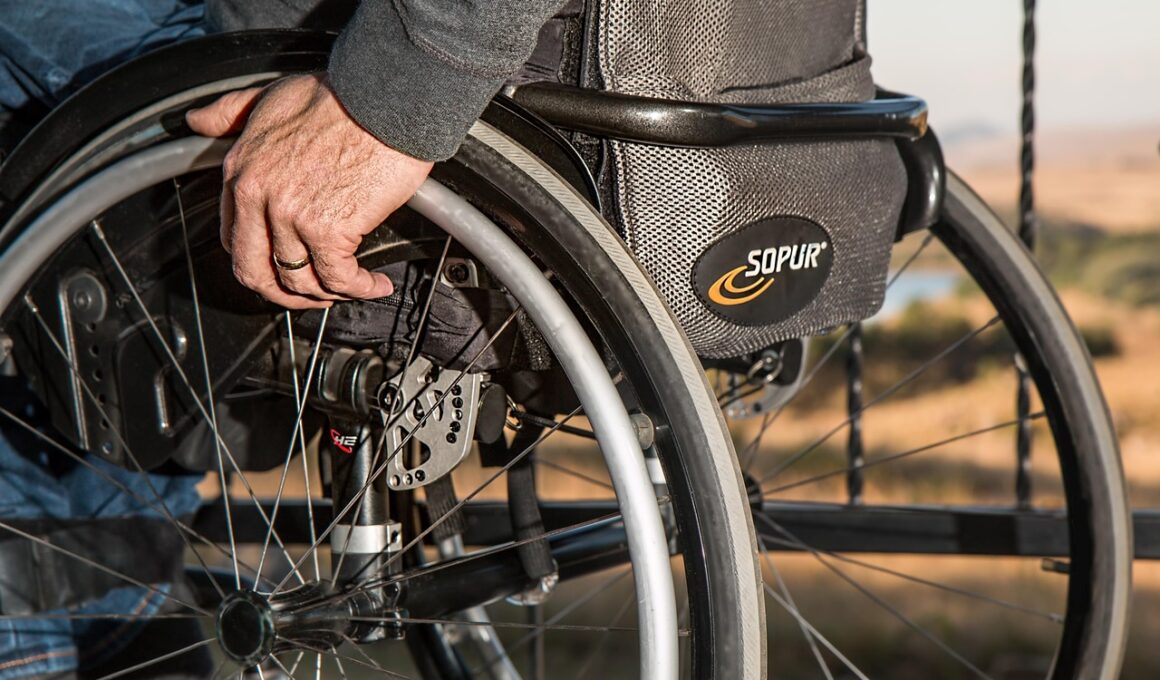The Role of Wearable Devices in Rehabilitation and Recovery
Wearable fitness devices have revolutionized the approach to rehabilitation and recovery for athletes and everyday individuals. These innovative gadgets, including smartwatches and fitness trackers, offer extensive functionalities that facilitate comprehensive tracking of physical activities and health metrics. With the advancement of technology, wearables can monitor vital signs, offering real-time feedback that assists both users and healthcare professionals. They help in identifying progress, adjusting recovery protocols, and promoting adherence to exercise regimens. Users benefit from tailored feedback, maximizing the efficiency of their rehabilitation programs. Wearable devices also often incorporate social sharing features, encouraging users to connect with friends for support and motivation. Additionally, these devices can send alerts that remind users to stay active or perform specific exercises critical to their recovery process. They provide an analytical overview, allowing for better-informed decisions regarding rehabilitation. As a result, healthcare providers can effectively track patient data without the need for constant office visits. The synergetic relationship between technology and medicine propels rehabilitation forward, making the recovery process more efficient and accessible.
Wearable fitness devices contribute significantly to data collection in rehabilitation contexts. The ability to collect various health metrics, such as heart rate, steps taken, and calories burned, allows for a comprehensive assessment of a user’s physical activity levels. Moreover, sophisticated wearables even enable the monitoring of sleep patterns, which can be crucial in recovery as sleep plays a pivotal role in healing. As patients undergo rehabilitation, continuous data tracking through these wearables can inform healthcare providers about their patient’s progress and physical limitations. Wearable devices simplify the data acquisition process, turning it into a straightforward experience for both patients and healthcare providers. The rhythmic patterns of movement alongside physiological data can highlight areas requiring focus or intervention, ultimately assisting in structuring personalized recovery plans. Additionally, the data can help physicians make timely decisions about treatment modifications. Overall, sophisticated algorithms within these devices analyze the plotted data trends, leading to proactive adjustments in rehabilitation plans. This adaptive approach can enhance effectiveness and encourage higher commitment levels to recovery protocols by patients.
Improving Motivation and Engagement
One of the most significant benefits of wearable fitness devices in rehabilitation is the increase in user motivation and engagement. The gamification elements included in many fitness trackers can drastically enhance the recovery experience. Daily step goals, challenge features, and competitive leaderboards add an engaging aspect that keeps users focused on their objectives. By turning the rehabilitation process into a series of achievable goals, individuals feel a sense of accomplishment each time they reach a milestone. Wearables also provide instant feedback, showing progress in real time, which can boost confidence and encourage consistent participation in rehabilitative activities. Device notifications remind users of their exercises, helping them stay accountable. Additionally, many devices have built-in social aspects that allow users to connect with friends and health professionals to share achievements. This encouragement can lead to improved satisfaction levels during the recovery process. As users become more engaged, it subsequently diminishes the feelings of isolation often experienced during rehabilitation, fostering a supportive community that enhances overall recovery experiences.
Health professionals widely recommend personalized monitoring tools available through wearable fitness devices. These devices offer customizable features tailored to the individual’s specific rehabilitation needs, making them highly beneficial in diverse recovery scenarios. Patients recovering from injuries often have unique requirements depending on their condition, lifestyle, and previous fitness level. Wearables equipped with customizable settings allow for the adjustment of exercise regimens according to real-time performance and health data. They can adapt to varying fitness levels and range of motion constraints. This personalized approach not only ensures patient safety during rehabilitation but also encourages ongoing improvement. Health professionals can analyze performance feedback provided by wearables, allowing them to adjust sessions based on their patient’s response. Furthermore, the portability of these devices enables patients to perform their rehabilitation exercises in various environments beyond the clinical setting. This versatility increases the likelihood of compliance and engagement with their prescribed regimens. Ultimately, the incorporation of wearables into rehabilitation signifies an essential shift toward individualized patient care, with an emphasis on adaptability and user-centered design.
Enhancing Communication Between Patients and Providers
The integration of wearable fitness devices facilitates enhanced communication between patients and healthcare providers, a crucial component for effective rehabilitation. Data collected through these devices is accessible to both parties, breaking down traditional communication barriers. Patients can share their real-time data during visits, providing clinicians with accurate insights into their activity levels and adherence to prescribed exercises. This transparency allows for more productive discussions during consultations, leading to better-informed decision-making regarding treatment plans. Furthermore, some devices offer the ability to send updates directly to healthcare professionals, enabling remote monitoring of patients. Telehealth has become increasingly integral in modern healthcare, and wearables streamline this process by delivering continuous health updates. This feature enhances engagement and accountability, as patients know their progress is being monitored. Consequently, they remain more focused on their rehabilitation goals. Enhanced communication can help address concerns promptly, allowing for the adjustment of recovery protocols before issues escalate. This dynamic interaction fosters a deeper partnership between patients and providers, creating an environment where successful rehabilitation can thrive.
Wearable fitness devices also serve as educational tools, empowering users to take charge of their recovery journeys. Through comprehensive data tracking, these devices not only provide essential performance metrics but also offer insights into best practices for rehabilitation. Many wearables come equipped with apps designed to educate users on effective recovery techniques, which may include guided exercises, stretching routines, and nutrition tips. This information plays a vital role in ensuring users understand the rehabilitation process and the significance of adherence to their prescribed activities. By fostering an environment of self-awareness, wearables help patients develop a holistic understanding of their health. As individuals engage with educational resources offered through their wearables, they become more invested in their recovery processes. When users feel empowered with knowledge, they are more likely to maintain commitment and consistency in following through with their rehabilitation plans. Overall, wearables promote a culture of proactive health management, increasing user engagement, and yielding positive outcomes in recovery.
The Future of Wearables in Rehabilitation
As technology continues to evolve, the future of wearable fitness devices in rehabilitation looks promising. Innovations such as artificial intelligence and machine learning will likely pave the way for even more personalized experiences. The development of smarter algorithms and better data analytics can help create advanced systems capable of predicting potential setbacks and tailoring rehabilitation programs accordingly. This tech-driven evolution will allow for constant refinement of recovery plans based on predictive modeling and user feedback, helping patients reach their rehabilitation goals more efficiently. Additionally, the integration of augmented reality and virtual reality features in wearable devices presents exciting opportunities. Patients may experience immersive rehabilitation exercises, making the process engaging and enjoyable. The potential for connecting wearables with more advanced health monitoring systems in medical facilities can seamlessly integrate patient data, enhancing overall healthcare outcomes. Wearable devices will ultimately become an indispensable component of rehabilitation frameworks, pushing the boundaries of recovery methods. The ongoing advancements in wearable technology will open new doors, ensuring successful outcomes for individuals embarking on their rehabilitation journeys.
In conclusion, the role of wearable devices in rehabilitation and recovery is transforming healthcare. These devices not only monitor progress but also enhance communication between patients and providers, increase motivation, and provide a personalized recovery experience. As the technology evolves, wearables are set to play an even more critical role in healthcare, empowering patients through data and education. The ability to adapt rehabilitation protocols based on real-time data heralds a new era of recovery tailored to individual needs. Wearables are fostering approaches that prioritize engagement and community support. As we embrace this advanced technology, patients can expect a more effective recovery process filled with opportunities for self-management. This paradigm shift emphasizes the importance of integrating technology into health initiatives, with success based on collaboration between users and healthcare providers. As individuals utilize wearables to take control of their rehabilitation journeys, they gain improved insights and ultimately enhance their healing processes. It is clear that wearable fitness devices are not just trends but essential tools reshaping rehabilitation, providing a brighter and healthier future.


